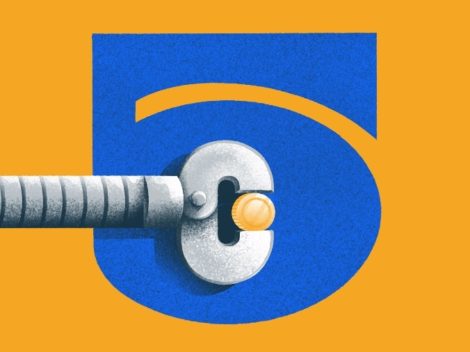Trendy restaurant operators deal with a common dilemma. They want to serve delicious, quality food in a chic spot. And they want to turn a profit and compensate staff decently. Yet they must also ensure that the price of a really good cheeseburger and fries does not exceed $20. Because customers won’t pay that much.
Subscribe to the Crunchbase Daily
Thankfully for carnivores, the upscale restaurant industry has found ways around the $20 cheeseburger problem. They’re charging extra for accompaniments, tacking on expensive and tempting beer menus, instituting counter ordering, and adopting all kinds of ingenious methods to ensure that the basic burger price hovers at no more than $15.
Startups should take note. While consumer-focused startups and recently-public unicorns are targeting different verticals, they face a similar conundrum as their food service brethren. There’s only so much consumers will pay for an Uber ride, a scooter rental, a takeout meal, a grocery delivery, and so on.
For now, pricing remains at levels supportive to growth due to a combination of factors. These include investors’ willingness to bankroll continued losses and gig economy workers willingness to accept flexible-schedule jobs with low pay and minimal to nonexistent benefits. Sooner or later, startups may have to charge what it really costs to provide their services. Let’s consider how different sectors might tackle the $20 cheeseburger dilemma.
Ride-Hailing
Of all unprofitable industries, ride-hailing offers some of the most detailed windows into how it loses money, thanks to the recent IPOs of Uber and Lyft. It’s not pretty. Uber’s operating loss over the 12 months before its IPO exceeded $3 billion, while Lyft’s net loss for the trailing 12 months was $1.8 billion.
It’s not as if they’re posting huge growth either. For Q4, Uber reported quarter-over-quarter revenue growth of just 1 percent. Lyft, meanwhile, is projecting around 4 percent revenue growth for its just-ended quarter.
Still, ride-hailing remains massively popular in large part due to its perceived affordability. In the San Francisco Bay Area, where Crunchbase hails, a hop of a few miles can often be cheaper (and easier) than parking a car.
Ride-haling, of all industries, also has some of the most developed answers to the $20 cheeseburger dilemma. Surge pricing. A selection that runs from fancy black car to pooled ride. And gamification tools to lure drivers to keep working.
The only trouble is, even with all that business model tweaking – the core service is still not profitable. And it’s not as if Uber drivers are getting rich off their labors either.
Probably the most foreseeable solution to the problem, at least for the U.S. market, would be for investors to refuse subsidizing continued losses for both Lyft and Uber. If neither could afford to operate in the deep red, they’d be forced to raise prices. And customers would be forced to pay.
Chances are the economics would work out ok for most customers. Just before its IPO, Uber was reportedly losing an average of 58 cents on each of its 5.2 billion rides last year. Most riders could manage a price hike of that magnitude.
Scooters
Scooternomics seem more perplexing. First off, the scooter industry appears to be a terrible economic proposition by current metrics.
In this year’s first quarter, Bird, one of the biggest players in the space, reportedly lost nearly $100 million while revenue shrank sharply to only about $15 million. While less is known regarding revenue metrics for Bird’s many rivals, they’re also not known to be minting profits, and their prodigious fundraising hints at massive deficits.
Second, scooter companies face a demographic dilemma when it comes to raising prices. Their high-growth market is young-people, who tend to have less money, particularly teens. If your user base is the dollar menu crowd, it’s hard to envision any strategy to make the $20 cheeseburger work.
There are plenty of suggestions rattling around as to how scooter companies might get to break-even. These include raising prices, offering more day and monthly pass options, and upgrading the fleet with bigger batteries and better durability. There’s also the possibility that the business will eventually pay for itself once revenues are big enough to cover the up-front cost of buying scooters. We’ll see.
Delivery
There are those who scoot, and there are those who sit and wait for others to deliver things. Given that couch potatoes still greatly outnumber scootering humans, it’s no surprise that the delivery space has sucked up a much bigger sum of venture funding.
Delivery has a bit more ways to sneak in costs and add efficiencies too. You can charge an up-front delivery fee, add a premium over in-store prices, encourage tipping in a way that does’t piss off customers and workers, and the list goes on.
With DoorDash, Instacart and others in IPO-watchers’ sights after their huge capital raises, they’re under increasing pressure to get their finances in order. That means they’ll likely be putting all those tools to work, potentially with lucrative results. As publicly-traded competitor GrubHub has demonstrated, it is possible to turn profitable.
Trouble is, consumers have a lot of options to avoid those costs too. You could go out yourself, use food you already have, buy groceries, heat up a frozen meal, and this list goes on.
Finding The Price Point
For now, on-demand startups face so much price competition and have so many resources to fund their losses that it’s tough to say what costs the market really will bear.
To what extent are consumers paying because we’re getting a good deal? The ability to buy a service for less than the cost of providing said service has its appeal.
When the flush venture funding goes away, will we pay what it really costs? And if we do, will we do so regularly? Or will it be more of a once-in-a-while splurge, akin to an overpriced cheeseburger.
Illustration: Li-Anne Dias.

Stay up to date with recent funding rounds, acquisitions, and more with the Crunchbase Daily.






![Illustration of a guy watering plants with a blocked hose - Global [Dom Guzman]](https://news.crunchbase.com/wp-content/uploads/quarterly-global-3-300x168.jpg)
67.1K Followers